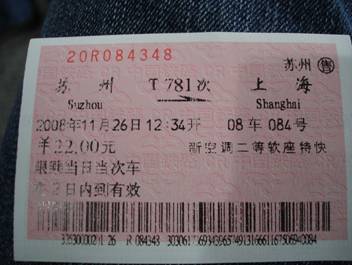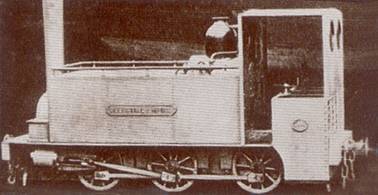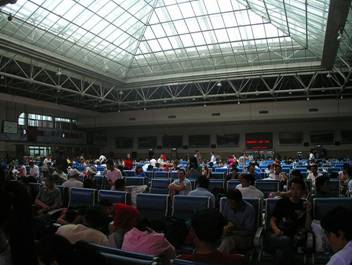The doors slid closed with that satisfying wheeze and hum of modern trains. The air-con began to whir as we pulled out of Shanghai Station. Once we’d cleared the city limits, the train picked up speed, and we were soon streaking through the grey Jiangsu countryside. Ten hours later, after a fitful sleep disrupted by intermittent snores, and the extravagant phlegm-hawks that are par for the course in any Chinese public situation, we pulled into Beijing Station. In a mere few hours, we had covered over a thousand kilometres and crossed three huge provinces, zipping between two of China’s major cities. It got me thinking: China’s rail system doesn’t have the illustrious glory of India’s railways, nor the world renowned history of the great American pioneer tracks, but intercity rail travel here is frequent, efficient, and relatively cheap. Plus, China is developing so quickly that there must be great things planned for the future of its railways. I decided to dig a bit deeper.
The very scale and usage of China’s railway system is impressive. The train is the most common method of long-distance transport for the Chinese, and the network is made up of an enormous 78,000 kilometres of track. This makes it the third largest rail system in the world, pipped only by Russia’s and the United States’. A ballpark figure places the number of trains at 18,500, both freight and passenger.
Early attempts at birthing a rail network in China were thwarted. The first stretch of railway was built by colonial-era engineering firm Jardine & Matheson in 1876. The Woosung Road linked Shanghai to the town of Woosung, which is now the inner-city neighbourhood called Baoshan. Jardine & Matheson failed to secure permission from Qing officials, who destroyed the railway in 1877, fearing such progress.

Photo: Wikimedia
The second length of track was laid in 1881 bridging the 10 kilometres between the industrial towns of Xugezhuang and Tangshan in Hebei Province. This railway’s function was to transport coal from the Tangshan mines. The project faced local opposition, but eventually won out thanks to the support of local Viceroy Li Hongzhang. This turn of the century Luddite attitude provides a surprising contrast to the virulently forward-looking sentiment of today’s China.
In 1888, the Tangshan route was extended west to Tianjin and east to Shanhaiguan and Suizhong six years later. It eventually formed part of what was called the Kaiping Tramway & Imperial Railways of North China.
Taiwan was another cradle for the development of rail transport. In 1887, Governor Liu Mingchuan decreed that a railway be built linking Keeling, Taipei and Hsinchu. The 10 kilometre stretch was completed in 1893, but destroyed during the Japanese occupation. Another case of ‘one step forward, two steps back’.
Yet another setback came with the Sino-Japanese War. The Qing Dynasty was weakened by fighting, but this was something of a silver lining in a very grey cloud. Qing officials pumped what little funding and effort they could into developing the railways, keen to regain power and face after their defeat. So the railways prospered. By 1911, 9,000 kilometres of track had been laid, mainly to connect industrial centres.

Locomotive used on the Woosung railway, Photo: Wikimedia
The epicentre of this expansion was Beijing. From it, several lines fanned out like spokes in a bicycle wheel. The first to be completed was the Jinghan line linking Beijing to Hankou in the Hubei Province (now part of the tripartite city of Wuhan). It was finished in 1906, followed six years later by the Jinfeng line. This was the new name for the old Tangshan-Xugeshuang route, plus its eastern extension to Fengtian. The Jinpu line, built between 1908 and 1912, linked Tianjin to Pukou in Jiangsu Province.
The first railway entirely of Chinese design and construction was the Jingzhang line joining Beijing with Zhangjiakou in Hebei. Begun in 1905 and finished in 1909, it was masterminded by engineer Zhan Tianyou, later nicknamed ‘Father of China’s Railway’.
One of the earliest and most important sections of China’s rail network is the China Eastern line. It was built to speed up the Tran-Siberian Railway, that huge leviathan that snaked across continents. The China Eastern line provided a much-needed extension from Siberia to Harbin, through Manchuria, and eventually the Russian port Vladivostok. The extension was complete in 1902.

Photo: 朕邦萬広
During the Civil War, the Communists sabotaged great lengths of the railway system to hamper the progress of the nationalist Kuomintang. The Nationalists, in their turn, pillaged less-used tracks to repair the damage. When the People’s Republic was born, the network was restored to around 22,000 kilometres of track.
Lines connecting eastern China to the far west were late coming. It wasn’t until 1952 that the Longhai Railway reached Lanzhou, capital of Gansu Province. The line was extended to Urumqi, capital of Xinjiang, ten years later, and lengthened all the way to Kashgar and the Kazakh border by 1990. As for Tibet, poor terrain and high altitudes prevented progress until 2006, when China was finally connected to Lhasa. This meant that every Chinese province had railways.
As for the future, the State Council has dedicated a huge ¥2 trillion to the development of the rail network, which will run up to the year 2020. By next year, the length of track will rise to 100,000 kilometres, and will have reached 120,000 by 2020. The majority of this extra track will be used for freight.
So next time you’re whiling away the hours on a long distance train trip, cast your mind back to the people, companies and effort that went into constructing China’s rail network!
***
Related Links
China to build its biggest high-speed train factory
Let 'D' Train Take the Strain
China's New Deal: Modernizing the Middle Kingdom
Warning:The use of any news and articles published on eChinacities.com without written permission from eChinacities.com constitutes copyright infringement, and legal action can be taken.
All comments are subject to moderation by eChinacities.com staff. Because we wish to encourage healthy and productive dialogue we ask that all comments remain polite, free of profanity or name calling, and relevant to the original post and subsequent discussion. Comments will not be deleted because of the viewpoints they express, only if the mode of expression itself is inappropriate.
Please login to add a comment. Click here to login immediately.